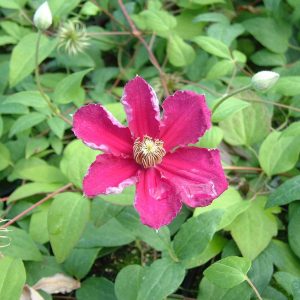Description
Cordyline are known for their tropical appearance with foliage found in a wide range of colours. There are hardy and tender species of Cordyline, with even the hardier species needing some protection while they are establishing themselves. As they mature they will form a thin trunk with tufts of foliage appearing from the top, and can bring a very tropical feel to your garden, reminiscent of a palm. They are best placed in a sheltered place although young tender varieties are sometimes used in borders as bedding plants.
Key Facts
- Common Name(s):cabbage palm ‘Torbay Dazzler’
- Hardiness:Half hardy and would benefit from protection through Winter.
- How big will I get? Cordyline ‘Torbay Dazzler’ can grow to a height of 4m and a spread of 1.5m.
- Did You Know That:Some species of Cordyline are religiously significant in Australasia?
Plant Calendar
A rough guide to how this plant will change through the year.
| Jan | Feb | Mar | Apr | May | June | July | Aug | Sept | Oct | Nov | Dec | |
| Foliage Colour |   |
  |
  |
  |
  |
  |
  |
  |
  |
  |
  |
  |
| J | F | M | A | M | J | J | A | S | O | N | D |
  |
  |
  |
  |
  |
  |
  |
  |
  |
  |
  |
  |
Care Guide

Soil Requirements
Cordyline ‘Torbay Dazzler’ is a versatile plant and can cope with wet or drier soils, but prefers there to be decent drainage. This plant can grow in soil with a wide range of pH levels, it is not picky about the pH level of the soil.

Best Position
Cordyline ‘Torbay Dazzler’ prefers a sheltered position and can cope with either full sun or partial shade.

Maintenance
Cordyline ‘Torbay Dazzler’ is fairly low maintenance and doesn’t require any pruning.

Pest, Diseases and Wildlife
Cordyline ‘Torbay Dazzler’ can have problems with scale insects, it can be vulnerable to certain diseases such as slime flux when damaged by frost. It is also known to attract bees. It is toxic to cats and dogs.





